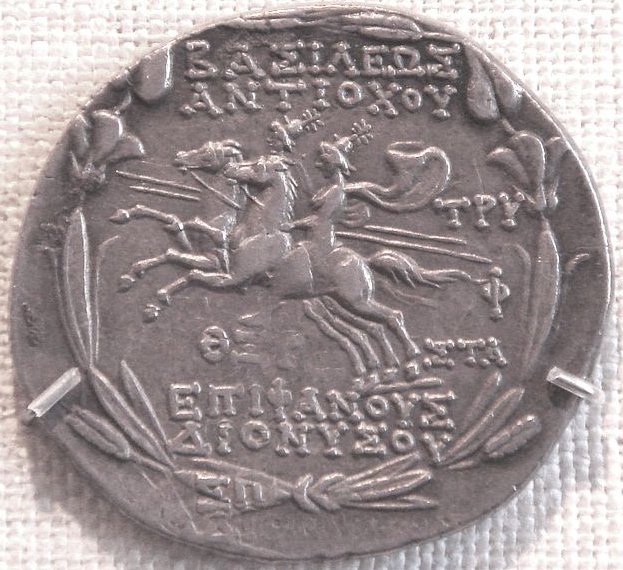|
2. However, Castor and Pollux are not rising heliacally in the 7th hour but in the 8th and they have to wait:
But we should notice that Castor, the one who is mentioned first, was not 'born high' - although the declination of his star is higher than that of Pollux. It was Polydeuces who had Zeus as father. I mention this because it agrees with my idea that right ascension is what primarily matters, not declination. The stars are distributed over 24 hours and signs are used to memorize their positions in relation to each other. These imaginary figures are arranged on the sky roof in patterns to function like the face of a watch. "During the French Revolution in 1793, in connection with its Republican calendar, France attempted to introduce a decimal time system. This had 10 decimal hours in the day, 100 decimal minutes per hour, and 100 decimal seconds per minute ...
Clocks were manufactured with this alternate face, usually combined with traditional hour markings. However, it didn't catch on, and France discontinued the mandatory use of decimal time on 7 April 1795, although some French cities used decimal time until 1801." (Wikipedia) Could there have been an influence from French Polynesia to Easter Island at the time when the rongorongo tablets were created? We have seen that the 'burial place' of the 1st 'year' could be in the 6th hour and we have also noted that in the 7th hour Canopus and Sirius - the blazing points in the sky far down in the south, in the 'cup' where 'water' collects - could indicate the point of return from where a new 'year' is rising. Therefore we can expect the 8th hour to exhibit signs of this new 'year', emerging like new land rising up from an inundation. In the 6th hour the Sun horses are gone is the message of Auriga. The great pyramids of Giza were designed to fit the pattern of the Belt Stars and the Giza plateau was on the western bank of the Nile (the 'River'). Canopus swallows the sea and Sirius releases an inundation (at the time of 'still sun-drenched noon'). The sky 'cap' should return in the 8th hour we can predict, and sure enough our mythical twin brothers wear caps to show who they are: "On votive reliefs they are depicted with a variety of symbols representing the concept of twinhood, such as the dokana (δόκανα - two upright piece of wood connected by two cross-beams), a pair of amphorae, a pair of shields, or a pair of snakes. They are also often shown wearing felt caps, above which stars may be depicted." (Wikipedia)
|


